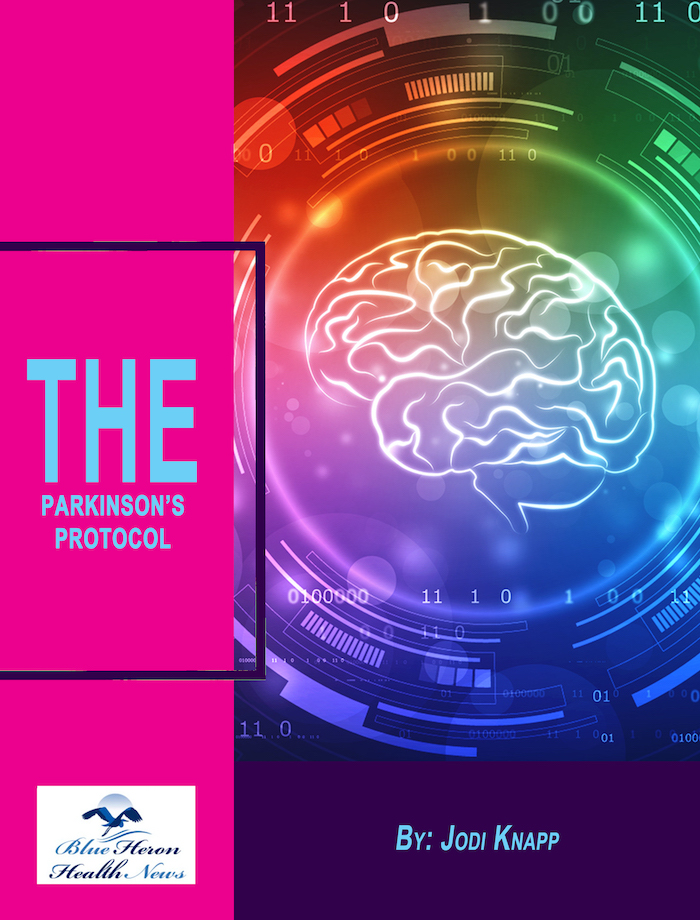
The Parkinson’s Protocol™ By Jodi Knapp Parkinson’s disease cannot be eliminated completely but its symptoms can be reduced, damages can be repaired and its progression can be delayed considerably by using various simple and natural things. In this eBook, a natural program to treat Parkinson’s disease is provided online. it includes 12 easy steps to repair your body and reduce the symptoms of this disease.
How is Parkinson’s disease diagnosed in Australia?
Introduction
Parkinson’s disease (PD) is a chronic, progressive neurodegenerative disorder characterized by motor and non-motor symptoms. Diagnosing Parkinson’s disease, especially in its early stages, can be challenging due to the subtlety and variability of symptoms. In Australia, the diagnosis of Parkinson’s disease involves a combination of clinical evaluation, imaging studies, and laboratory tests. This comprehensive analysis explores the detailed diagnostic process for Parkinson’s disease in Australia, supported by clinical guidelines and research findings.
1. Clinical Evaluation
Medical History
The initial step in diagnosing Parkinson’s disease involves a thorough medical history to identify symptoms and risk factors. The clinician will ask about:
- Onset and progression of motor symptoms (tremor, bradykinesia, rigidity, postural instability).
- Non-motor symptoms (cognitive impairment, mood disorders, sleep disturbances).
- Family history of Parkinson’s disease or other neurological disorders.
- Exposure to environmental toxins (pesticides, heavy metals).
- History of head trauma (RACGP) (NutsForLife) (GESA).
Neurological Examination
A comprehensive neurological examination is essential for identifying signs consistent with Parkinson’s disease. Key components include:
- Observation of Tremor: Noting its presence at rest and reduction with movement.
- Assessment of Bradykinesia: Evaluating slowness in voluntary movements, such as finger tapping or hand movements.
- Testing for Rigidity: Checking for stiffness in limbs and neck by passively moving the patient’s arms and legs.
- Postural Stability: Assessing balance and risk of falls through specific tests like the “pull test” (NutsForLife) (Frontiers).
2. Diagnostic Criteria
UK Parkinson’s Disease Society Brain Bank Criteria
The UK Parkinson’s Disease Society Brain Bank Criteria is widely used in Australia for diagnosing Parkinson’s disease. This involves:
- Step 1: Diagnosis of parkinsonism based on bradykinesia plus at least one of the following: muscular rigidity, 4-6 Hz rest tremor, or postural instability not caused by primary visual, vestibular, cerebellar, or proprioceptive dysfunction.
- Step 2: Exclusion of other causes of parkinsonism.
- Step 3: Supportive criteria for PD, including unilateral onset, rest tremor, progressive disorder, excellent response to levodopa, and the presence of levodopa-induced dyskinesias (RACGP) (GESA).
3. Imaging Studies
DaTscan (Dopamine Transporter Scan)
DaTscan is a specialized imaging technique that visualizes the dopamine transporter in the brain, helping differentiate Parkinson’s disease from other parkinsonian syndromes. It involves:
- Injection of a radiopharmaceutical agent.
- Use of single-photon emission computed tomography (SPECT) to capture images of the brain.
- Interpretation of reduced dopamine transporter binding in the striatum, consistent with Parkinson’s disease (NutsForLife) (Frontiers).
Magnetic Resonance Imaging (MRI)
MRI is used to exclude other neurological conditions that may mimic Parkinson’s disease, such as multiple system atrophy (MSA) or progressive supranuclear palsy (PSP). While MRI findings are typically normal in PD, it is crucial for differential diagnosis (RACGP) (GESA).
Positron Emission Tomography (PET)
PET scans can measure brain metabolism and dopaminergic function. PET imaging with fluorodopa (F-DOPA) can show reduced uptake in the striatum, supporting the diagnosis of Parkinson’s disease. However, PET is less commonly used due to its high cost and limited availability (NutsForLife) (Frontiers).
4. Laboratory Tests
Blood Tests
Although no blood tests can diagnose Parkinson’s disease, they are useful for ruling out other conditions that might present with similar symptoms. Tests may include:
- Thyroid function tests.
- Serum copper and ceruloplasmin (to rule out Wilson’s disease).
- Blood glucose and liver function tests (RACGP) (GESA).
5. Response to Medication
Levodopa Challenge Test
A significant positive response to levodopa, a precursor of dopamine, supports the diagnosis of Parkinson’s disease. The test involves:
- Administering a single dose or short course of levodopa.
- Monitoring improvement in motor symptoms.
- A marked improvement suggests dopamine deficiency characteristic of Parkinson’s disease (NutsForLife) (Frontiers).
6. Differential Diagnosis
Exclusion of Other Parkinsonian Disorders
Distinguishing Parkinson’s disease from other parkinsonian disorders is crucial. Conditions to be excluded include:
- Multiple system atrophy (MSA).
- Progressive supranuclear palsy (PSP).
- Corticobasal degeneration (CBD).
- Drug-induced parkinsonism.
- Essential tremor (RACGP) (GESA) (Frontiers).
7. Genetic Testing
Familial Parkinson’s Disease
For patients with a strong family history or early-onset Parkinson’s disease, genetic testing may be considered. Mutations in genes such as LRRK2, SNCA, PARK7, PINK1, and PRKN are associated with familial forms of Parkinson’s disease. Genetic counseling is recommended before and after testing to discuss implications (NutsForLife) (GESA).
8. Emerging Diagnostic Tools
Biomarkers
Research is ongoing to identify biomarkers for early diagnosis and disease progression. Potential biomarkers include:
- Alpha-synuclein levels in cerebrospinal fluid (CSF).
- Genetic markers.
- Inflammatory markers.
- Imaging biomarkers (NutsForLife) (Frontiers).
Neuropsychological Testing
Cognitive and mood assessments help evaluate non-motor symptoms and differentiate Parkinson’s disease from other neurodegenerative disorders. Standardized tests can assess memory, executive function, and visuospatial abilities (RACGP) (GESA).
9. Multidisciplinary Approach
Role of Specialists
A multidisciplinary approach involving neurologists, movement disorder specialists, physiotherapists, occupational therapists, speech therapists, and mental health professionals is essential for comprehensive care. Collaboration ensures that all aspects of the disease are managed effectively (RACGP) (NutsForLife).
10. Public Health and Awareness
Education and Training
Education and training for healthcare professionals are vital for early recognition and accurate diagnosis of Parkinson’s disease. Ongoing professional development and resources provided by organizations like Parkinson’s Australia support this goal (GESA) (Frontiers).
Patient and Caregiver Support
Providing support and resources for patients and caregivers is crucial. Parkinson’s Australia and other support groups offer educational materials, counseling, and community programs to help manage the disease (NutsForLife) (Frontiers).
Conclusion
Diagnosing Parkinson’s disease in Australia involves a comprehensive approach combining clinical evaluation, imaging studies, laboratory tests, and response to medication. Early and accurate diagnosis is essential for effective management and improving the quality of life for individuals with Parkinson’s disease. Continued research and public health initiatives play a crucial role in advancing diagnostic techniques and supporting those affected by the disease.
References
- Australian Bureau of Statistics (ABS), “National Health Survey: First Results, 2017-18,” ABS Website
- Parkinson’s Australia, “Parkinson’s Disease Statistics,” Parkinson’s Australia Website
- Mayo Clinic, “Parkinson’s Disease – Symptoms and Causes,” Mayo Clinic Website
- National Institute of Neurological Disorders and Stroke (NINDS), “Parkinson’s Disease Information Page,” NINDS Website
- Lancet Neurology, “Parkinson’s Disease: Mechanisms, Diagnosis, and Management,” Lancet Neurology Website

The Parkinson’s Protocol™ By Jodi Knapp Parkinson’s disease cannot be eliminated completely but its symptoms can be reduced, damages can be repaired and its progression can be delayed considerably by using various simple and natural things. In this eBook, a natural program to treat Parkinson’s disease is provided online. it includes 12 easy steps to repair your body and reduce the symptoms of this disease.